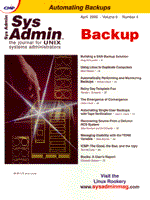
Sidebar 1: The Facts about T1Why does a T1 line operate at 1.544 Mbps but 24 64-Kbps PCM-encoded voice channels result in an aggregate operational rate of 1.536 Mbps? To understand this difference, I'll digress a bit (no pun intended) and probe deeper into the relationship between digital channel bank voice digitization and framing.
Each voice input into a channel bank is sampled 8,000 times per second, with each sample converted into an 8-bit byte. Because in North America the channel bank was designed to operate on 24 analog voice inputs, the TDM multiplexes 24 8-bit bytes, resulting in a 192-bit frame that represents one digitized sample from each of 24 analog voice inputs. As previously mentioned, the need to know where one frame ends and the other begins is fundamental for being able to correctly de-multiplex the data stream. Additionally, if two channel banks lose synchronization, the ability to locate a known repeating framing bit pattern facilitates a resynchronization process. Recognizing this, the developers of the channel bank added an extra framing bit to each sequence of 192 bits, resulting in a 193-bit frame. Since there are 8000 frames transmitted per second, this explains the difference between the operating rate of a T1 line that is 1.544 Mbps and simply multiplying 24 voice channels by 64 Kbps produces an operating rate of 1.536 Mbps. The 8000 bps difference represents the framing bits, which were initially used for synchronization, and as the channel bank evolved, the commercially available T1 line began to be used to convey performance data in addition to facilitating synchronization.
|